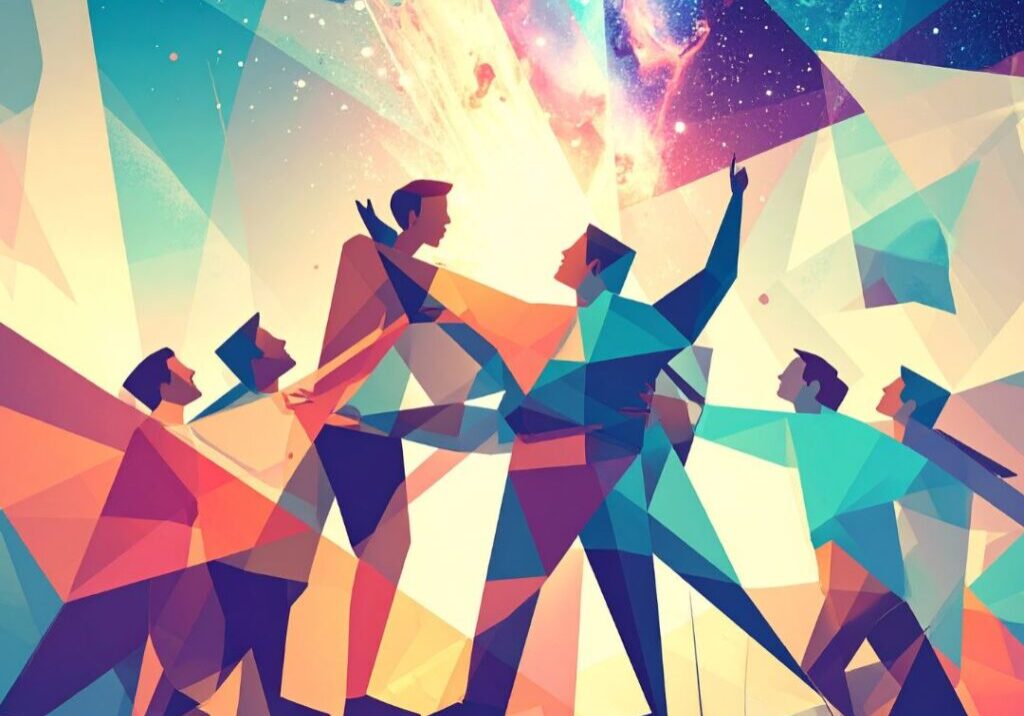Integral Ecology in an Age of AI
In 1972, the Norwegian philosopher Arne Naess proposed a new paradigm based on the holistic view of interconnected nature. He coined the term “deep ecology” to challenge humanity to ask fundamental questions about our place in nature. Rejecting anthropocentrism (human-centeredness) in favor of ecocentrism, Naess argued that all living beings have inherent value regardless of their utility to humans.
At its philosophical core, deep ecology asserts that boundaries between self and other do not exist; all living things are interrelated parts of a larger whole. This perspective leads to what Naess called “self-realization”—a broader identity that encompasses all of nature. Deep ecology maintains that humans are part of nature rather than superior to or separate from it. Protecting nature becomes equivalent to protecting ourselves.
The concept of integral ecology emerged later with a renewed awakening of our place in the biosphere. Cultural historian Thomas Berry and theologian Leonardo Boff, among others, envisioned an “Ecozoic Era” characterized by a harmonious relationship between humans and Earth. Like deep ecology, integral ecology advocates for a holistic approach to humanity’s place in the biosphere but specifically addresses political, social, economic, and environmental problems facing our world. It connects “the cry of the Earth” with “the cry of the poor,” seeing both as stemming from current capitalist and colonialist world orders. A key principle of integral ecology is that environmental and social crises are not separate issues but rather one complex socio-environmental crisis requiring integrated solutions.
The late Pope Francis introduced the term “integral ecology” in his encyclical Laudato Si’, calling for a new paradigm that recognizes the interconnectedness of environmental, economic, social, cultural, and ethical dimensions of life. Integral ecology supports the fundamental idea that “everything is connected” and that today’s environmental and social problems require “a vision capable of taking into account every aspect of the global crisis.” Pope Francis emphasized that “an integral ecology calls for openness to categories which transcend the language of mathematics and biology and takes us to the heart of what it is to be human.” This approach stresses the interdependence between humans and nature, insisting that, although we are often unaware of it, we depend on larger ecological systems for our very existence. Vital processes such as carbon dioxide regulation, water purification, and waste decomposition facilitate life on Earth but are frequently taken for granted.
Integral ecology means that environmental questions have to incorporate a social perspective which takes into account the fundamental rights of the poor and the underprivileged. This perspective recognizes that environmental problems disproportionately affect vulnerable communities. As Pope Francis wrote, “When our hearts lack tenderness, compassion and concern for our fellow human beings,” it becomes “inconsistent to combat trafficking in endangered species while remaining completely indifferent to human trafficking, unconcerned about the poor, or undertaking to destroy another human being deemed unwanted.”
The ideals of deep ecology and integral ecology deserve our attention. They challenge us to move beyond the unhealthy anthropocentrism that defines our age and invite us to embed ourselves within the relationships of nature and culture. However, ecological sustainability faces significant challenges from the dominance of computer technology, artificial intelligence, and particularly social media. Numerous studies show that excessive computer use can lead to attention loss, diminished critical thinking, dopamine addiction, impatience, forgetfulness, and narcissism. In her book, Alone Together: Why We Expect More from Our Technologies and Less from One Another, psychologist Sherry Turkle observed, “We respond to machines not as tools to use but as role models to emulate. As people act upon this proclivity, the isolation and loneliness of modern life is being increased.”
The Vatican recently issued a document on AI, indicating that the concerns surrounding artificial intelligence are complex (Antiqua et Nova 2025). The Catholic Church’s position on AI is cautious and ethically driven, encouraging AI development for human betterment, while stressing careful consideration of potential risks. The Vatican acknowledges that AI has the potential to be a powerful tool for good, citing its ability to improve various aspects of life, including healthcare, education, and environmental sustainability. They view scientific and technological advancements, including AI, as gifts from God, capable of remedying many of the evils that afflict humanity. According to the Vatican, the development and deployment of AI must be guided by ethical principles that prioritize human dignity and the common good.
While I appreciate the Vatican’s ethical and moral concerns, I think stating that AI is simply a tool for human use, or that AI systems should be designed solely to serve human needs, severely undermines technology’s role in human evolution. What I find missing from the Vatican’s views on technology and ecology is the essential role of evolution. The Church speaks as if the human person is uniquely created when, in fact, the human person is the most current species in evolution. Without accepting evolution as the starting point for assessing what we are in relation to non-human nature and technology, the ideals of the common good and integral ecology remain abstract.
Teilhard de Chardin was a Catholic priest who realized that evolution is not background to our story, it is our story. “Nothing holds together,” he wrote, “except the whole, and the whole is in evolution.” Without understanding the dynamics of evolution which include complexity, novelty, self-organization, and creativity, integral ecology and technology appear conceptual rather than emergent properties of complexified life in evolution.
The issue is not ecology versus technology, nor is it about preserving the human person as if we are to be eternally preserved as homo sapiens (how unnatural!). Rather, it concerns nature itself—its energetic essence, intrinsic connectivity, and the way static energy is taken up and reused on new organizational levels. Without incorporating modern scientific insights, philosophy and theology remain self-preserving disciplines incapable of effecting the changes they envision. In his 1967 article on “The Historical Roots of our Ecologic Crisis,” historian Lynn White issued a sharp critique of Christianity by saying: “We shall continue to have a worsening ecologic crisis until we reject the Christian axiom that nature has no reason for existence except to serve us.” He added: “Since the roots of our problems are religious, the remedy must be religious as well.”
This is where Teilhard de Chardin’s vision is vital to today’s world. Teilhard saw evolution as a dynamic unfolding of mind and matter, both open to greater complexity and consciousness. He spoke of “bifacial” matter, possessing both withinness and withoutness, consciousness and attraction, transcendence and unity. He identified love as the core energy of the universe because love simultaneously attracts and transcends. Love functions as a unitive energy, “the building power that works against entropy,” through which elements search their way toward union.
Teilhard believed that biological and cosmic life possess an unyielding openness not adequately explained by materiality alone; rather, matter has an innate propensity toward spirit. He viewed this energy as the overflow of matter—as evolution’s religious dimension. He wrote: “There is only one real evolution, the evolution of convergence, because it alone is positive and creative.” Nature possesses an intrinsic wholeness, a horizon of complexifying wholeness oriented toward ultimate unity. For this reason, he argued that religion and evolution belong together: “Religion and evolution should neither be confused nor divorced,” Teilhard wrote, “they are destined to form one single continuous organism, in which their respective lives prolong, are dependent on, and complete one another.”
Teilhard lived at the dawn of the computer age and was fascinated by computers as a new level of interconnecting minds. This new level, he said, represents a new stage of evolutionary convergence—the formation of what he called “the noosphere,” a new plane of co-reflective thought and action. Just as Earth once covered itself with a film of interdependent living organisms which we call the biosphere, humankind’s achievements are forming a global network of collective mind. The noosphere is a psycho-social process, a planetary neo-envelope essentially linked with the biosphere in which it has its roots yet is distinguished from it.
Teilhard saw evolution proceeding toward greater unification of the whole in and through the human person, whom he viewed as the growing tip of the evolutionary process. In his introduction to Teilhard’s Human Phenomenon, Julian Huxley wrote, “we should consider inter-thinking humanity as a new type of organism whose destiny it is to realize new possibilities for evolving life on this planet.” Both Huxley and Teilhard envisioned this new type of person, a hyperpersonalizing being on a new level of “cooperative interthinking.” Just as human persons developed a complex brain, the earth is now developing a “planetary brain” made possible by computer-mediated interconnected minds. Teilhard posited a new type of person to embody this planetary brain, an “ultra” human whereby thought is no longer limited to the individual but operates on the level of the convergent and collective. This new type of person is emerging in younger generations today.
Teilhard recognized that science alone is insufficient to effect the transition to superconsciousness and collective unity: “It is not tête-à-tête or a corps-à-corps we need; it is a heart to heart.” Technology, therefore, must serve love as the universe’s deepest energy. Only when the noosphere aligns with cosmic life can it facilitate the deeply personal through convergence and creativity. Teilhard wrote: “The future universal cannot be anything else but the hyperpersonal.” In his view, the hyperpersonal represents an evolutionary step toward a new world Soul, a unifying spiritual thread of interconnecting minds. The further evolution of humanity toward greater unity, he wrote, “will never materialize unless we fully develop within ourselves the exceptionally strong unifying powers exerted by inter-human sympathy and religious forces.” Thus, he advocated that mysticism plays an essential role in evolution.
Teilhard’s vision is empowered by divine love, cosmically convergent and energetically driven toward maximum wholeness, symbolized by Omega. To return to the whole is to relocate ourselves as an intrinsic part of nature; to advance the whole is to consciously reflect on what we desire; to act toward the whole is to realize that God depends on us for the completion of cosmic love. Computer technology and AI can facilitate this vision if we develop AI with a cosmogenic purpose. Teilhard wrote: “Not all directions are good for our advance: one alone leads upward, that which through increasing organization leads to greater synthesis and unity… Life moves toward unification. Our hope can only be realized if it finds its expression in greater cohesion and greater human solidarity.”
Technology is neither a problem nor a solution; it is intrinsic to biological evolution and functions to optimize life in evolution. The problem of technology lies in the conflicted human person who is fearful and constrained by ancient philosophies and religious ideas. It also resides in the self-preserving person of inordinate wealth, fearful of death and nothingness. There is no inherent problem between technology and integral ecology. There is, however, a profound problem of human personhood—what we are, what we desire, and what we live for. Since religion is the divine pole of human evolution, the problem of the human person is fundamentally a religious one. If we can put to rest our Platonic ideals and consciously participate in the dynamic real, evolution may proceed toward greater unity and justice, enkindled by AI development and the emergence of planetary community—a world of deep interconnectivity with a living Soul.
 View print-friendly version
View print-friendly version
27 Comments
Leave a Comment
Related Posts

Mission for an Evolutionary Christianity
We are living through tumultuous times. Political polarization intensifies, violence against vulnerable populations escalates, and the foundational principles of human dignity face erosion. For many, the cognitive dissonance between professed…


In concrete terms, the use of AI demands energy and water. The one depends on the other. No compromise can be made with human living conditions and environmental sustainability. Justice demands that the poor not suffer more as technology advances, that Mother Nature not sicken more than she already has. Darwinism accepts the loss of species as new species advance. Can we tolerate similar losses to human populations and ecologies?
Attempting to turning back or even stall evolutionary outcomes of every kind in the cosmos is as futile a project as asking the earth to stop rotating around the sun. How do we not recognize this reality. God’s answer to Job was along these lines, as is Christ’s opening lines in Revelation, as set down by John, “‘I am the Alpha and the Omega,’ says the Lord God, ‘who is, and who was, and who is to come, the Almighty'”, as was the conversation between Moses and God at the burning bush, “I AM WHO I AM” and as footnoted in the NIV bible provides, “I WILL BE WHAT I WILL BE”. It all seems to be a story of “BECOMING”. What are WE becoming, and how do we become the best version of the future possible, and might we seek God’s direction on this? This seems to be the very biggest question to be answered by humanity today! Thank you Ilia for bringing us back to this over achingly important contemplation!
Brilliant writing as always Sr. Ilia. And l can’t help but believe divine intervention as l just read this this morning as l was slowly finishing coffee and converging towards Lectio for my morning devotion.
Why a visitation by Sophia, moi, well l confess it was only yesterday l wrote a rash and insensitive post.
I was expressing my troubled mindset regarding the resources and oppressive practices required to continue the exponentially developing potential of AI. As an avid listener of Amy Goodman and Juan Gonzalez on DemocracyNow! – just last week the broadcast had a compelling guest speaking about her recent new book titled:
Empire of AI: Dreams and Nightmares in Sam Altman’s OpenAI (the company behind ChatGPT).
I have no doubt you and your team at Christogenesis are all aware of all the complex layers of the evolving AI technology, both with the awe inspiring benefits to our complexifying noosphere and our inevitable projection towards Omega.
And of course the challenges of directing the amazing potential of AI into the right hands. At the same time as being cognizant of the earth’s resources and global locations where the actual facilities required to continue furthering its complexifying potential.
All that being said l’m seeking for clarity with teachers such as yourself which initially got me onto this band wagon with “The Not – Yet God”,
“Personal Transformation and a New Creation”, “Birth of a Dancing Star”… currently reading and always learning with “God’s Ecstasy” and “Radical Optimism”… just saying l don’t want to throw out the baby with the bath water 🙂
Rob in Tucson
off the cuff on a wing
ps. I do apologize for my previous post l sent in unexamined anger
☮️ and blessings
BTW: Re: Previous comment: My belief paths took a sharp turn when I discovered Teilhard at Arcosonti in 1978, and, now, further upon discovering Ilia and her christogenesis. No matter what, theologians educated in Christianity like Elia and Rohr, for examples, don’t seem to be able to think without the framework of Jesus Christ. The Jesus Christ story is great. I’m eternally grateful for him and his story. Obviously, I think, act and write as a theology enthusiast only, not a systematic academic theologian.